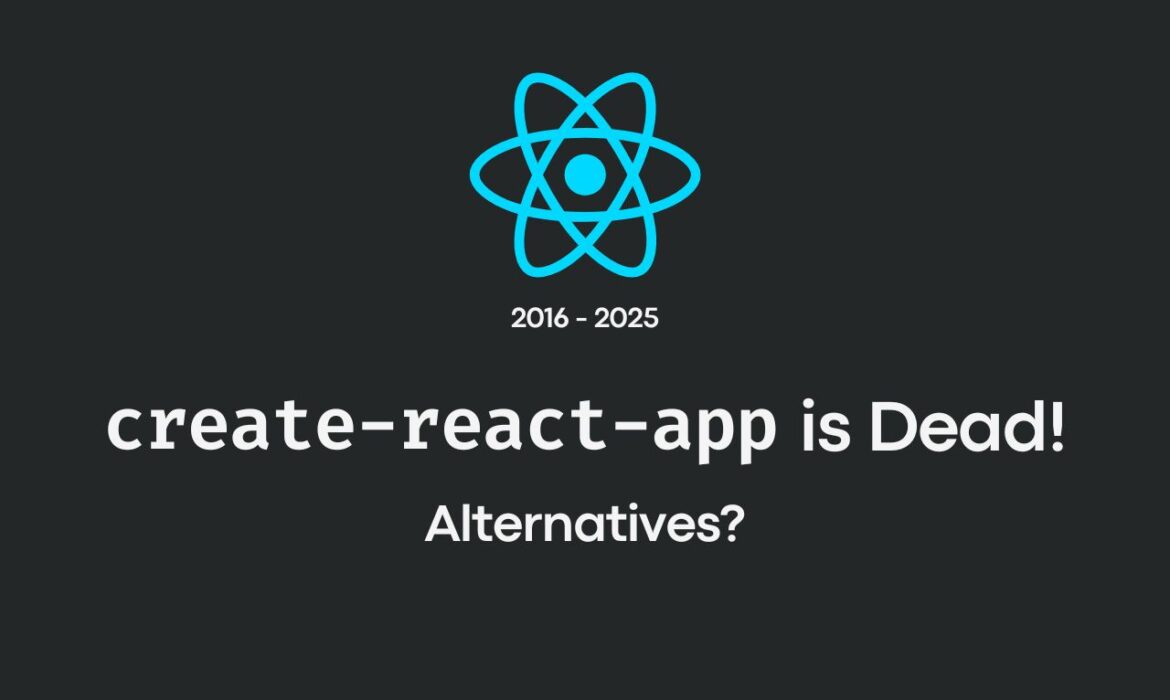Create React App Deprecated – What It Means & Alternatives
Create React App Deprecated – What It Means & Alternatives
Introduction
Create React App (CRA) has been a go-to tool for quickly setting up React projects. However, it has now been deprecated due to performance limitations and the rise of better alternatives like Vite and Next.js. In this blog, we’ll explore why CRA is being phased out, the best alternatives, and how to migrate your existing projects smoothly.
What is Create React App (CRA)?
Create React App is a command-line tool that helps developers set up a new React project with zero configuration. It provides Webpack, Babel, ESLint, and other essential tools pre-configured, allowing developers to focus on building their applications.
Why is Create React App Being Deprecated?
- Performance Issues: CRA is slower compared to modern build tools.
- Webpack Limitations: CRA relies on Webpack, which can be slow in large projects.
- Better Alternatives: Vite, Next.js, and Parcel offer better performance and developer experience.
- Lack of Updates: CRA hasn’t seen major improvements, making it outdated in the fast-moving frontend ecosystem.
What are the best alternatives to Creating a React app?
1. Vite
Vite is a lightning-fast frontend build tool optimized for modern JavaScript frameworks, including React.
2. Next.js
Next.js is a powerful React framework that supports server-side rendering (SSR) and static site generation (SSG).
3. Parcel
Parcel is a zero-configuration bundler known for its fast builds and easy setup.
4. Custom Webpack/ESBuild
Advanced developers can configure Webpack or ESBuild for complete control over their build process.
Effects on Existing Projects Using CRA
Existing CRA projects will continue to work but may face issues with long-term maintenance and performance. Migrating to an alternative like Vite or Next.js is recommended.
Step-by-Step Guide to Migrating from CRA to Vite
- Install Vite:
npm create vite@latest my-app --template react - Move your existing components and assets to the new project.
- Update dependencies and configurations.
- Run
npm installandnpm run devto start your new project.
Conclusion
Create React App served its purpose but is now deprecated. Developers should transition to modern, faster alternatives like Vite or Next.js for better performance and scalability.
References & Further Reading
Need Help Migrating to Vite? Reach Out!
If you’re looking to migrate your existing Create React App project to Vite, our expert developers can help. Contact us today!
JavaScript vs. TypeScript: Making the Right Choice for Development
When commencing web development projects, choosing the right programming language is crucial. For many developers and agencies, the decision often comes down to JavaScript and TypeScript. Both languages have their unique advantages and use cases, and understanding when to use each can significantly impact project success. Let’s explore the strengths, real-life problems, and use cases for both JavaScript and TypeScript.
JavaScript
Advantages of JavaScript:
- Widespread Usage: JavaScript is one of the most popular and widely supported programming languages in the world, making it an excellent choice for web development.
- Quick Prototyping: Thanks to its simplicity and low entry barrier, JavaScript is often the go-to choice for rapid prototyping and small-scale projects.
- Rich Ecosystem: JavaScript boasts a vast ecosystem of libraries and frameworks, including React, Angular, and Vue.js, which are ideal for front-end development.
- Lightweight: JavaScript is lightweight and perfect for simple scripts and single-page applications.
Use Cases for JavaScript:
- Front-End Development: JavaScript is indispensable for creating dynamic, interactive user interfaces in web applications.
- Server-Side Development: With Node.js, developers can use JavaScript for server-side programming, making it a viable option for full-stack development.
- Web Animations: JavaScript is often the go-to choice for creating animations and interactive elements on websites.
TypeScript
Advantages of TypeScript:
- Type Safety: TypeScript provides strong static typing, reducing the likelihood of runtime errors and making it easier to catch bugs during development.
- Improved Code Maintainability: TypeScript’s type annotations and interfaces enhance code clarity and maintainability, especially in large and collaborative projects.
- Editor Tools: TypeScript offers excellent tooling, including code autocompletion and in-line documentation, which increase developer productivity.
- Integration with Existing JavaScript Code: TypeScript allows for gradual adoption, meaning you can start using it in an existing JavaScript project without rewriting everything.
Use Cases for TypeScript:
- Large-Scale Projects: TypeScript shines in large and complex projects where type safety and code maintainability are crucial.
- Collaborative Development: Teams benefit from TypeScript’s strong typing, which reduces communication errors and improves code quality.
- Cross-Platform Development: TypeScript can be used on both the front end and back end (Node.js), making it a solid choice for full-stack development.
Real-life problems and examples
1. Problem: Type Safety
JavaScript: Suppose you are working on a large e-commerce website, and you need to calculate the total price of items in a shopping cart. In JavaScript, without type checking, you might accidentally add a string to a number, leading to unexpected behaviour and potential runtime errors.
let total = 0;
total += 10;
total += "5"; // No type checking in JavaScript
console.log(total); // Outputs "105" instead of 15
TypeScript Example: With TypeScript, you can define the types explicitly and catch such errors during development:
let total: number = 0;
total += 10;
total += "5"; // TypeScript error: Type 'string' is not assignable to type 'number'
console.log(total);
2. Problem: Code Maintainability
JavaScript: Imagine you’re developing a web application with many components. In JavaScript, it can be challenging to keep track of what data each component should receive and return without type definitions. This can lead to debugging issues and confusion in larger projects.
TypeScript: TypeScript enables you to define and enforce interfaces for components, making it easier to maintain and understand the code:
interface User {
name: string;
age: number;
}
3. Problem: Integration with External Libraries
JavaScript: Integrating external JavaScript libraries can be challenging, as they often lack type definitions. You might need to rely on documentation and runtime checks to ensure correct usage.
TypeScript: With TypeScript, you can use declaration files (e.g., .d.ts) to provide type information for external libraries, making integration more seamless and safer. For instance, when working with a library like Axios:
import axios from 'axios';
axios.get('/api/data') .then((response) => { // TypeScript knows the shape of the response console.log(response.data); }) .catch((error) => { console.error(error); });4. Problem: Refactoring and Scaling
JavaScript: As your project grows, refactoring can become challenging in JavaScript, particularly when renaming variables, functions, or objects. Finding and updating all the relevant instances manually can be error-prone.
TypeScript: TypeScript simplifies refactoring, as it can automatically identify and update all references when you rename a type or interface, thanks to its static analysis capabilities.
5. Problem: Collaborative Development
JavaScript Example: In a team of developers, miscommunication or misunderstandings can lead to inconsistent coding practices. Without strict type checking, developers may make errors in their code, leading to integration issues and reduced efficiency.
TypeScript Example: TypeScript helps teams maintain coding standards and catch errors early in the development process, enhancing collaboration and reducing the likelihood of bugs.
Conclusion:
The choice between JavaScript and TypeScript ultimately depends on the specific needs of your web development project. While JavaScript remains a versatile and valuable choice for many tasks, TypeScript offers a powerful alternative when type safety, code maintainability, and tools support. By understanding the strengths and use cases of each language, developers and agencies can make decisions and select the right choice for the job.
The key is to leverage the strengths of JavaScript for rapid development and small-scale projects and embrace TypeScript for robust, type-safe, and maintainable solutions, particularly in larger and more complex endeavours. In the ever-evolving landscape of web development, having both JavaScript and TypeScript in your toolkit allows you to tackle a broader range of projects and deliver exceptional results for your clients and users.



